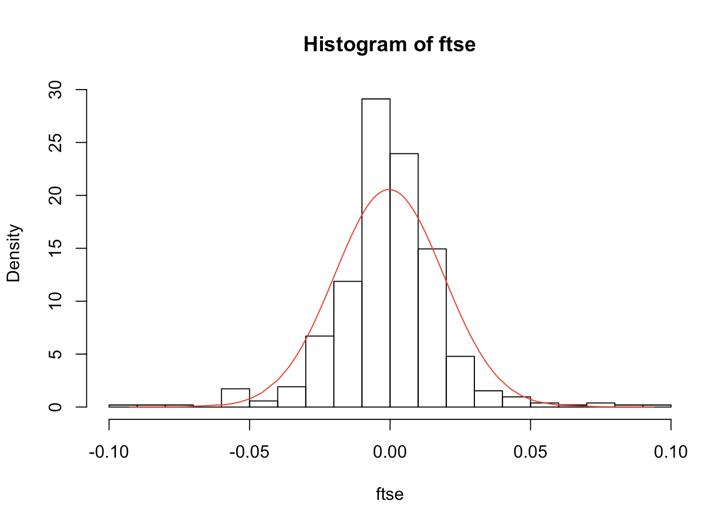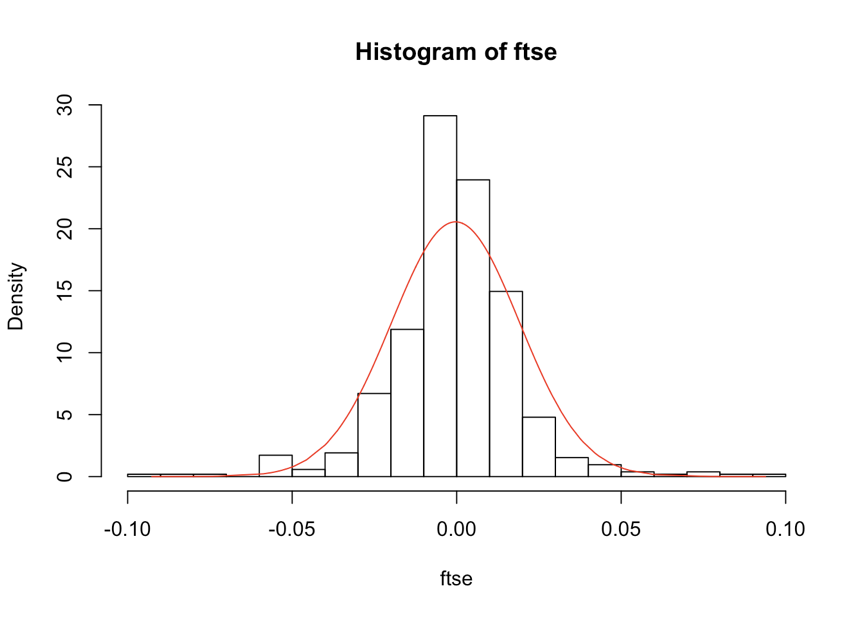Skewness, kurtosis and the Jarque-Bera test
Quantitative Risk Management in R

Alexander McNeil
Professor, University of York
Skewness and kurtosis
- Skewness (b) is a measure of asymmetry
- Kurtosis (k) is a measure of heavy-tailedness
- Skewness and kurtosis of normal are 0 and 3, respectively

$$ = {1 \over n}\sum_{t=1}^n(X_t-\hat{\mu})^3 \over \hat{\sigma}^3 $$
$$ = {1 \over n}\sum_{t=1}^n(X_t-\hat{\mu})^4 \over \hat{\sigma}^4 $$
Skewness and kurtosis (II)
library(moments)
skewness(ftse)
-0.01187921
kurtosis(ftse)
7.437121

The Jarque-Bera test
- Compares skewness and kurtosis of data with theoretical normal values (0 and 3)
- Detects skewness, heavy tails, or both
$$ T = {1 \over 6}n\left(b^2 + \frac{1}{4}(k - 3)^2\right) $$
jarque.test(ftse)
Jarque-Bera Normality Test
data: ftse
JB = 428.23, p-value < 2.2e-16
alternative hypothesis: greater
Longer-interval and overlapping returns
- Daily returns are usually very non-normal
- What about longer-intervals returns?
- Weekly, monthly, quarterly returns obtained by summation
- Recall CLT - suggests they may be more normal
- Reduce quantity of data so tests are weaker
- Can also analyze overlapping or moving sums of returns
Let's practice!
Quantitative Risk Management in R

